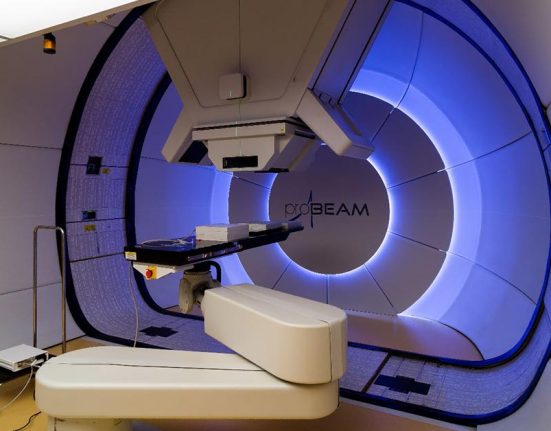Cancer is a complex disease that can manifest in various forms, affecting different organs and tissues in the body. Due to this complexity, different forms of treatments for cancer are necessary, one of which is radiation therapy. In this article we will explain more about radiation therapy in Singapore – what it is, when it is typically used, what is the process, and more.
What Is Radiation Therapy?
Radiation therapy, also known as radiotherapy, is a medical treatment that uses high doses of ionising radiation to target and destroy or damage cancer cells. The goal of radiation therapy is to shrink tumours, prevent their growth, and eliminate cancer cells while minimising the impact on surrounding healthy tissues as much as possible.
Radiation therapy is often used as a primary treatment for certain types of cancer, and it can also be combined with other treatment modalities such as surgery, chemotherapy, or immunotherapy, depending on the individual case. The decision to use radiation therapy depends on factors such as the type of cancer, its location, and the overall health of the patient.
When Is Radiation Therapy Typically Used?
- Before surgery to shrink a tumour for easier removal.
- After surgery to help destroy remaining cancer.
- When inaccessible tumours cannot be removed with surgery.
What Are The Different Types Of Radiation Therapy?
- Photon external beam radiation (or X-ray) – light particles that are energised to pass through the body during treatment.
- Proton external beam radiation – positively charged particles in the nucleus of an atom.
Both of these types destroy cells, but protons have the advantage of depositing little radiation going into the body and stopping directly at the tumour site.
How Long Is A Radiation Therapy Treatment?
The course of treatment depends on the prescription of the patient’s physician. It may be daily or 5 days per week for 1-7 weeks.
Radiation Therapy Team
A team of highly-trained medical professionals will be involved in patient care during radiation therapy treatment. It includes:
- Radiation Oncologists – Doctor who will oversee the patient’s treatments.
- Radiation Therapists – Gives the daily radiation treatment under the doctor’s prescription and supervision.
- Radiation Oncology Nurses – Takes care of the patient throughout the treatment. They will explain the possible side effects and teach how to manage these effects.
- Radiation Physicists – Works directly with radiation oncologists and engineers to ensure consistency in the quality, accuracy, and delivery of treatment.
- Radiation Dosimetrists – Works directly with radiation oncologists to come up with the optimal treatment plan and ensure smooth treatment delivery.
Radiotherapy Procedure
1. Consultation
The initial step in the treatment process involves visiting the radiation oncologist. During the consultation, the oncologist thoroughly reviews your records, pathology reports, and X-ray films. Additionally, a comprehensive physical examination is conducted. The radiation oncologist discusses treatment recommendations, addressing any concerns or questions you may have. CT simulations and treatment appointments are then scheduled based on the outlined treatment plan.
2. CT Simulation
Following the consultation, the next step is CT simulation. The radiation therapists will guide you to the CT simulation room, ensuring the optimal treatment position for effective access to the target area. To maintain precision throughout the treatment, an immobilisation device like customised masks or moulds may be used. A CT scan will then be performed in the designated treatment position, enabling the radiation oncologist to design the exact size and area for subsequent treatments.
- Contrast materials may be required to aid in visualising organs in the CT images.
- Small pieces of wires are placed on the skin for the oncologist to see certain landmarks.
- Small permanent tattoos marks will be made near the region of interest to ensure accuracy.
- Temporary pen markings will be drawn on the skin to help identify the treatment area.
3. Treatment Planning
Treatment planning involves collaboration among the radiation oncologist, physicist, and dosimetrists. Information gathered during CT simulation, coupled with previous medical tests, is meticulously reviewed, including MRI and PET-CT scans. The radiation oncologist then formulates a treatment prescription, and advanced computer software is utilised to design an optimal treatment plan for the best possible outcomes.
4. Start Of Treatment
Before the commencement of treatment, the patient will be briefed to outline expectations for the entire treatment course. Positioned similarly to the simulation scan, the patient will lie down on the machine bed. The radiation therapists will then adjust your body to the correct treatment position. The treatment itself is painless, with no heat sensation, though the patient’s cooperation is crucial for maintaining stillness and ensuring accuracy.
Monitored on TV screens, the patient may communicate with the radiation therapists if necessary. Attending scheduled treatments is vital to the effectiveness of radiation therapy, as missing sessions can compromise the treatment’s overall impact.
What To Expect During The Treatment
After positioning you on the treatment couch according to the prescribed treatment plan, the radiation therapists will step out of the treatment room to capture X-ray images of the designated treatment area.
This step ensures the accuracy of your position on the couch. Throughout the session, additional X-ray scans and minor positional adjustments may be made to guarantee consistency in your treatment positioning. You may feel some couch movements while the radiation therapist adjusts your position between scans to achieve the ‘perfect treatment position’.
Throughout the session, additional X-ray scans and minor positional adjustments may be made to guarantee consistency in your treatment positioning.
What To Expect After The Treatment
Your radiation oncologist will see you every week to follow up with your progress, evaluate your condition, and monitor side effects during the treatment. Medications will also be prescribed to manage side effects. Additional diagnostic tests may also be ordered to check on your health progress.
Where To Get Radiation Therapy In Singapore
Health365 in partnership with Singapore Institute Of Advanced Medicine Holdings, offers radiation therapy in Singapore such as proton beam therapy. Contact us through the button below to schedule a consultation.
Source and reference: Proton Therapy SG
Protect against cancer, cardiovascular disease, and other chronic diseases with regular health screening. Compare and shop for health screenings from Singapore and regional healthcare providers at a single convenient platform - shop.health365.sg
This article is informative only and is not intended to be a substitute for professional medical advice, diagnosis, or treatment, and should never be relied upon for specific medical advice.















